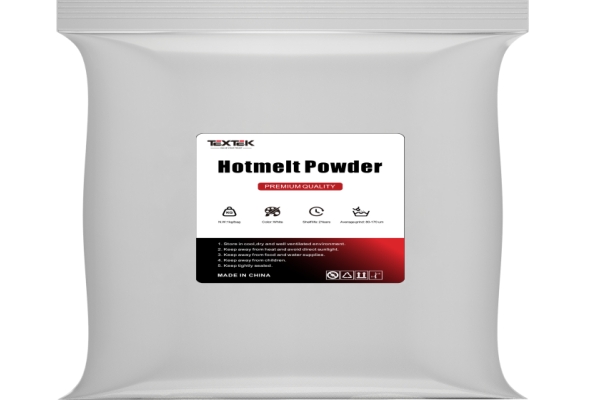02
Apr
Do your prints appear dull? If so, it could be due to the wrong powder. Read our expert guide to learn how to select the right DTF powder, explore your options, and identify key characteristics. Match the powder to your fabrics and reduce print failures today!

Using high-quality DTF powder can significantly enhance the vibrancy and durability of your prints. This thermoplastic polyurethane (TPU) hot melt powder ensures excellent ink adhesion, resulting in designs that maintain elasticity and resist cracking even after multiple washes. Selecting the correct powder is essential for achieving optimal print quality.
Consider the particle size, typically between 80-170 microns, for the best results. Finer mesh powders provide a softer touch on garments. Additionally, proper curing temperatures around 150°C activate the adhesive properties, making the choice of DTF powder crucial for print quality.
Selecting the right DTF powder is key to achieving outstanding print results. This guide offers essential considerations for developing an effective strategy.
Choose a DTF powder that aligns with the specific garment material:
The intricacy of your design affects powder selection:
Assess how much washing and stretching the printed area will endure:
Ensure the powder is compatible with your DTF printer:
Conduct thorough testing before full production runs:
| Factor | Key Consideration | Recommended Powder Type | Ideal Size (µm) | Melt Point (°C) | Wash Cycles (Est.) | Peel Method |
|---|---|---|---|---|---|---|
| Substrate Type | Fabric Material | TPU/PA/PU | 80-180 | 105-160 | 30-50+ | Varies |
| Design Complexity | Detail Level | Fine/Medium PU/TPU | 80-150 | 110-140 | 30-40 | Cold/Warm |
| Durability Needs | Wash/Stretch Requirements | High Melt TPU/PA | 100-180 | 130-160 | 40-60+ | Cold Preferred |
| Printer Compatibility | Shaker/Manual Specifications | OEM Recommended | Match Equipment | Match Speed | ~40 | Varies |
| Test Protocol | Adhesion/Wash/Flex | Pass AATCC/ISO | Run Small Trials | Verify Cure Temp | Confirm Target | Perform Tests |
Polyamide (PA) powder offers high strength and durability, making it ideal for workwear that withstands rigorous washing (90°C). Particle sizes range from 80 to 250 microns, with bonding temperatures around 140-150°C.
Polyurethane (PU) powder is versatile and provides excellent elasticity and adhesion. Common particle sizes are 80 to 200 microns, with melting points of 90-115°C, making it suitable for many cotton and blend garments.
Thermoplastic Polyurethane (TPU) powder excels in flexibility and softness, ideal for performance wear. AGP’s high-purity TPU ensures crack resistance and excellent wash durability (60°C), with particle sizes ranging from 0 to 200 microns.
EVA powder is less common in DTF printing due to lower durability. It’s primarily used in flexible applications like packaging and is typically excluded from garment printing.
This refers to the force required to remove the DTF film. Hot peel allows for immediate removal, while cold peel requires waiting for 30 seconds. Quality powders ensure easy, clean peeling without damaging designs.
Elongation indicates how much the powder can stretch before cracking. High-stretch TPU powders are essential for soft fabrics, allowing designs to move with the garment.
This measures the ability to resist fading during washes. Look for high ratings (4 or 5) in tests, ensuring vibrant prints even after multiple washes.
Opacity defines how well the powder covers the underlying fabric color. Coarser powders often provide better coverage, especially for white ink underbases on dark garments.
Good flowability ensures even powder distribution during application. Maintaining uniform particle size (80-200 microns) and anti-static features is crucial for optimal performance.
Natural fibers like cotton are best suited for TPU powders, typically in the 80-170 micron range, providing durability and wash fastness up to 60°C.
Synthetic materials like polyester require careful consideration. Special black DTF powder may be necessary to prevent dye migration, while low-temperature curing powders are ideal for heat-sensitive fabrics.
Coated fabrics pose adhesion challenges. Specialized adhesive powders may be required, and adjustments to pressure and time during heat pressing can improve results.
For elastic fabrics like spandex, high-stretch TPU powders are necessary to prevent cracking during stretching.
Non-woven fabrics require low-temperature powders (130-150°C) for optimal adhesion. Coarser powders may enhance the bond on rough surfaces.
TEXTEK offers a wide range of high-quality DTF powders tailored for professional printing needs. Their upgraded TPU powder provides excellent wash resistance and elasticity, preventing cracking on stretchable fabrics. With particle sizes from 80 to 170 microns, TEXTEK's powders ensure good adhesion and optimal results at hot pressing temperatures of 110 to 130°C.
What’s the Difference Between Hot Melt and Cold Peel Powders?
Hot peel allows for immediate film removal, while cold peel requires a wait. Hot peel results in a glossy finish, whereas cold peel gives a matte look.
How Does Particle Size Impact DTF Prints?
Particle size affects printing details and texture. Medium and fine powders (80-170µm and 0-80µm) influence the final feel and detail of prints.
Can One Powder Work for All Fabrics?
No single powder is suitable for every fabric. Medium TPU powders work for various textiles, but specific powders are needed for polyester and high-stretch spandex.
How to Store DTF Powder Properly?
Store DTF powder in airtight containers to prevent moisture clumping. Maintain humidity levels between 40-60% and keep temperatures cool (20-25°C) for optimal flowability.
Now you know how to pair the right powders with your fabric needs. By considering factors like peel strength, you can avoid common printing errors.
Choosing the right DTF powder is straightforward once you understand the fundamentals. For further assistance, check out TEXTEK.COM for professional guidance to boost your chances of success!
